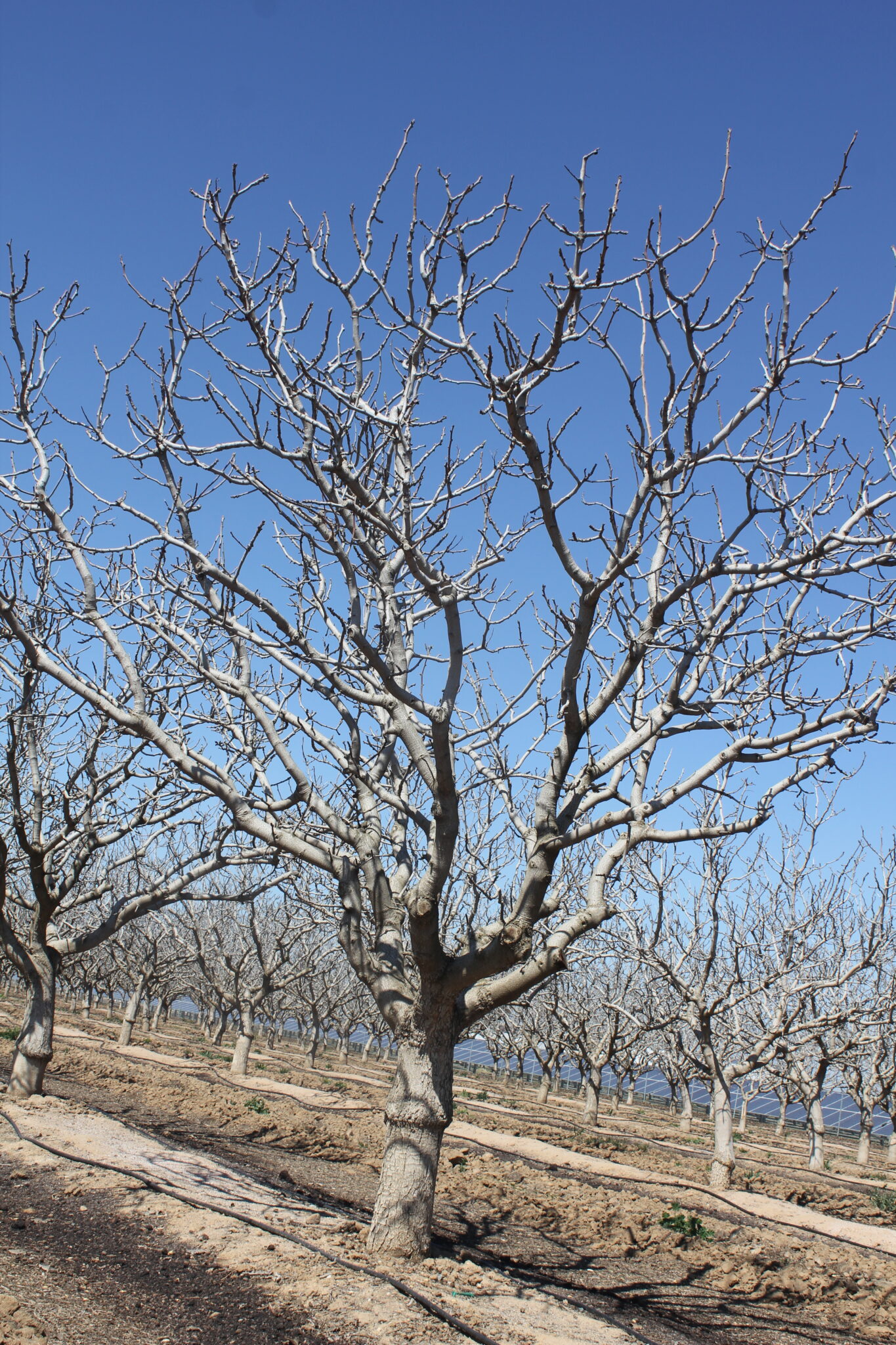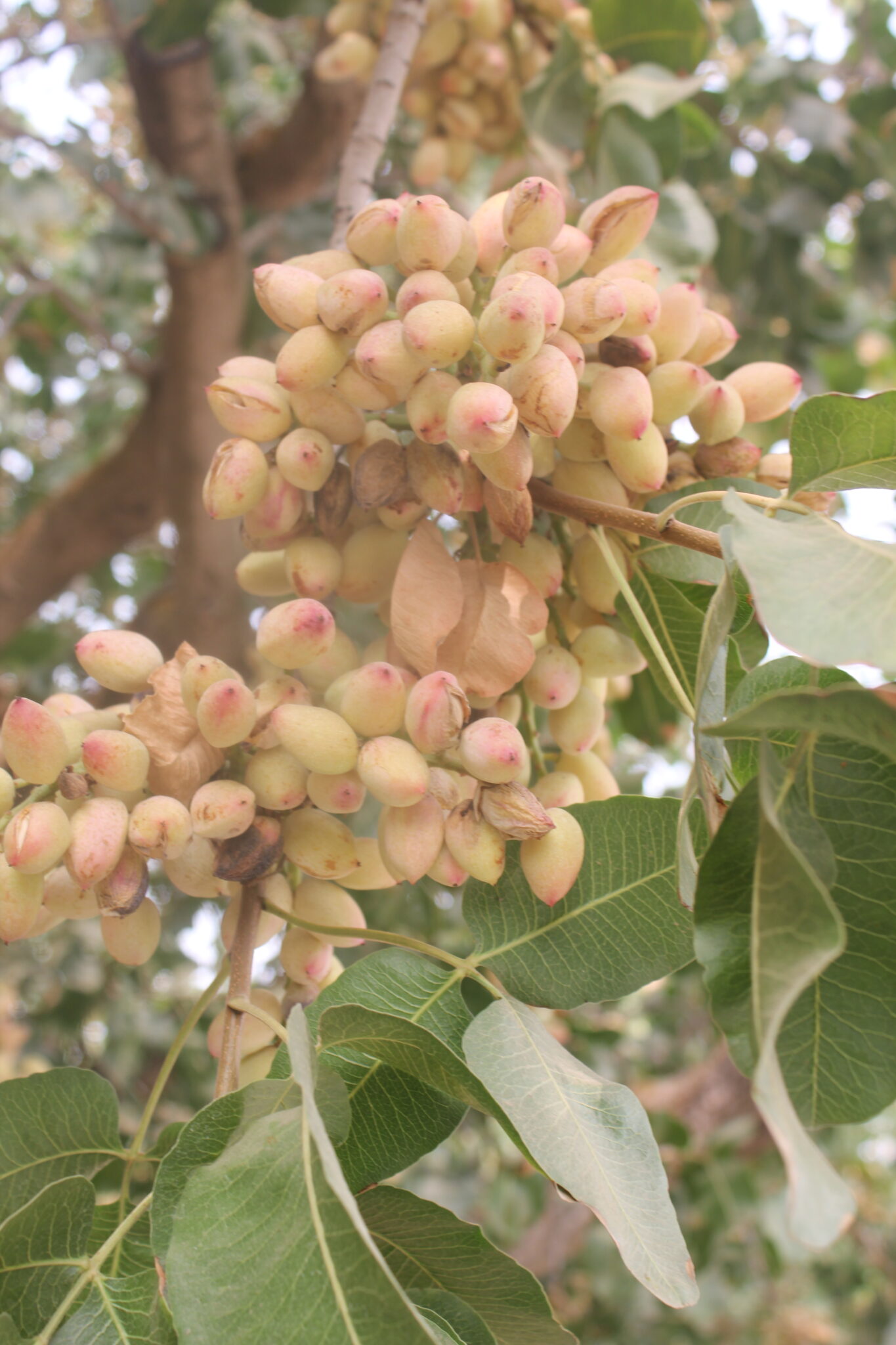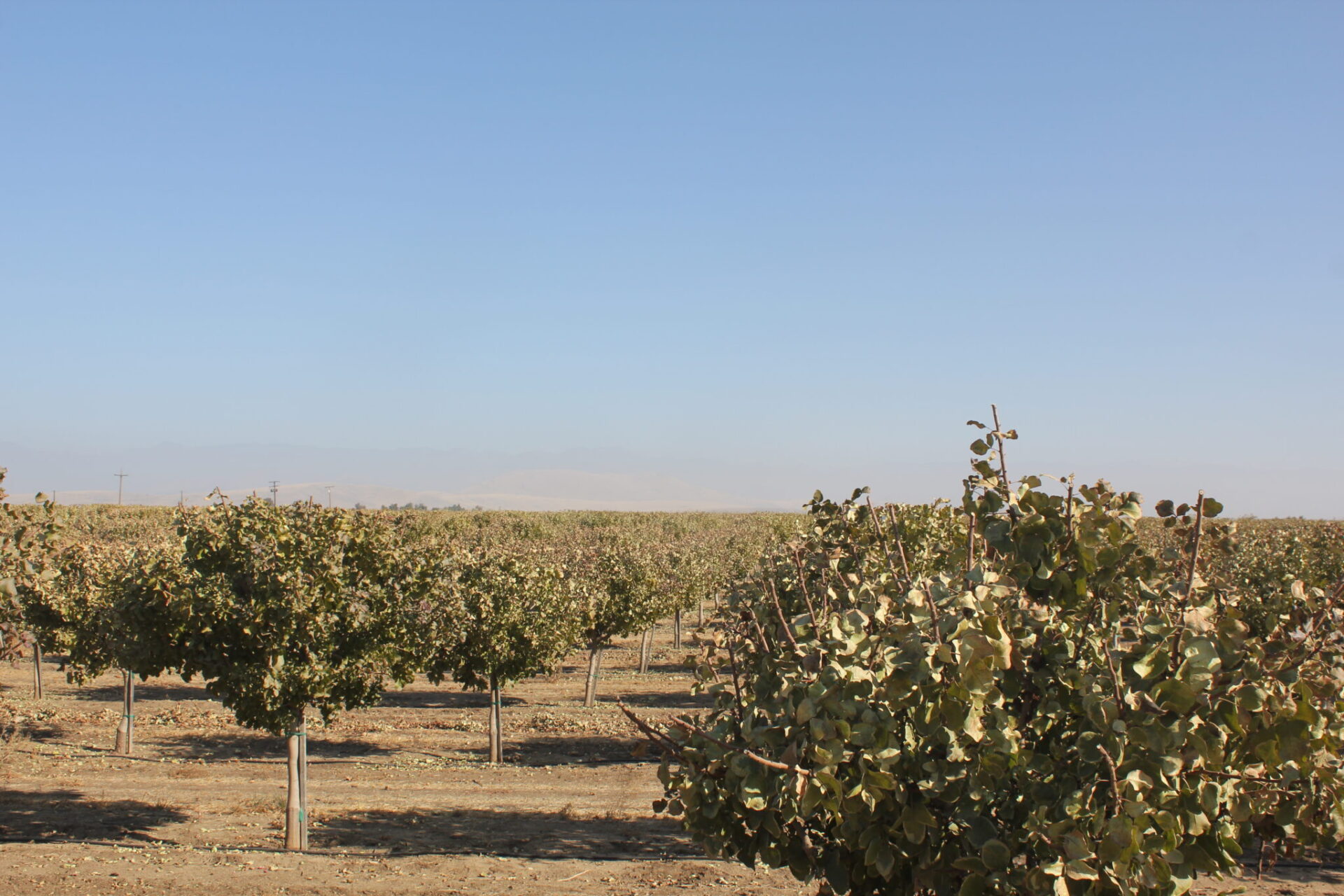
Even though one of the first pistachio trees planted in California put down roots in the northern Sacramento Valley town of Chico, the majority of the state’s expanding pistachio production is in the central to southern half of the San Joaquin Valley.
It stands to reason: pistachio trees are native to a country with a hot, dry climate and were thought to be best suited for the counties of Kern, Tulare, Kings and Fresno where summers are hot and dry. In the last decade, there has been a shift in that thinking, UCCE farm advisors and nurseries agreed, noting that planted acreage in the Sacramento Valley has increased from about 2,000 acres to 10-12,000 acres.
Most of that new acreage is in Yolo County, though trees are still being planted farther north, and production could be possible as far north as Anderson in Tehama County, according to Cliff Beumel of Agrimillora Nursery.
“Wherever almonds and walnuts are growing, they can too,” Beumel said.
Although the Sacramento Valley was always well-suited for pistachio production, Bob Klein, manager of the California Pistachio Research Board, said the bulk of the early plantings were done in the southern San Joaquin Valley due to relatively lower land prices. Fungal diseases, more prevalent in the north, were harder to control in the past before development of effective fungicides.
Pistachio acreage is expanding in the north, Klein said, but most orchards tend to be smaller than those found in southern growing areas, and most of the growers are new to pistachio production.

Unique Growing Conditions
Pistachio growers are taking advantage of some unique growing conditions in the north, said UCCE Orchard Systems Advisor Katherine Jarvis-Shean. In areas of the Sacramento Valley where water and soils are high in boron, pistachio trees can thrive, unlike almond and walnut trees. This was a driver in the earlier pistachio plantings there, she said.
Jarvis-Shean, who advises growers in Solano, Yolo and Sacramento counties, noted in a 2020 UC Pistachio Short Course presentation that, given fewer low-chill winters are predicted in the future, chances for a pistachio tree’s winter rest may be better up north.
“Lack of low chill may not be quite as severe up north, but they are not going to be immune to it either.”
Threat of freeze damage is no worse than in it is in the south valley, Jarvis-Shean said.
“Similar to chill, when it’s bad in the San Joaquin Valley, we experience it up here, too. That said, I have not yet seen it take out trees the way it seems to in Craig Kallsen’s district (Kern County). There’s certainly an interaction between salt stress and freeze damage, and we don’t have as much salt stress up here. Maybe that’s why the damage is not so bad. But we’re still figuring that out.”
There are some environmental conditions that could pose challenges to tree health.
Botryosphaeria and anthracnose are two diseases that could have more of an effect on pistachio production where environmental conditions are wetter than in the south SJV. Life cycles for these diseases need water, Jarvis-Shean said, and wet late springs could put trees at a higher risk of infection.
“Growers will need to have more of a fungal disease management program. There is a higher risk here for infection and they may need to apply one more spray. It is not unmanageable though,” Jarvis-Shean said.
She said presence of soil pathogens and nematodes are not likely to be major issues in the north compared to southern growing regions.

Infrastructure Issues
Reid Robinson with Sierra Gold Nursery predicted the northern production growing pains will be mainly due to lack of infrastructure.
Currently, there are no pistachio processing plants north of Sacramento.
That could be an issue when a large amount of the acreage comes into production. Other support, including work crews that have pistachio pruning experience and budding experience, is needed. Harvesting could also pose a challenge, but Jarvis-Shean noted that the crop maturity in the north is about a week behind southern production and that it is possible equipment could migrate north for harvest.
Klein pointed out that even though there currently are no pistachio processing facilities north of Sacramento, there are several that have been built farther north in the San Joaquin Valley.
As production increases, he said that hulling and drying facilities would likely be built.
Reid also said that the industry in the north might need optimized rootstocks that can withstand the heavier soils and rootstock pathogens. Early research, he added, does show that Platinum is a bit more resilient in those conditions.
Reid and Jarvis-Shean also mentioned issues with a lower split nut percentage.
Splits are driven, Jarvis-Shean said, as kernels expand in size. Expansion is driven by heat units, which the nuts may lack with a nut maturity that is later in the north.
“Advantages to growing pistachios in the Sacramento Valley are plenty,” Reid said.
“Water availability is huge. Lots of strategic growers are moving north to capture water.
You are also able to optimize heavy boron areas which aren’t suitable to almond or walnuts.”
Navel orangeworm pressure is lower in northern counties, Reid said. Natural winter mortality is higher in the Sacramento Valley and fourth flights are less common. Orchard sanitation is still strongly recommended, but growers can expect to make fewer pesticide applications in their orchards.










